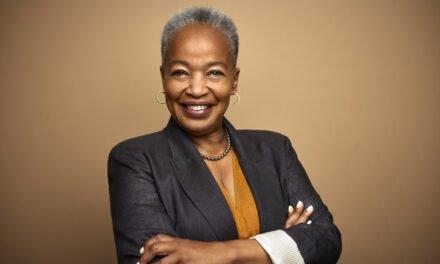“It’s hard to explain / Inherently, it’s just always been strange / Neither here nor there / Always somewhat out of place everywhere / Ambiguous / Without a sense of belonging to touch / Somewhere halfway / Feeling there’s no one completely the same / Standing alone / Eager to just / Believe it’s good enough to be what / You really are / But in your heart / Uncertainty forever lies / And you’ll always be / Somewhere on the / Outside.” –Mariah Carey
I heard this song in the late 1990s or early 2000s when I was a middle schooler, which is already a time when most people are navigating an awkward stage of life and experiencing challenges with fitting in. A conflicted racial identity can make this time even more difficult. This song has resonated with me throughout my life because, as a woman who identifies as both Filipino and white, I have often found myself straddling the line between privilege and oppression — not experiencing the level of either privilege nor oppression to its fullest, being not privileged as much as a person who is only white and not oppressed as much as a person who is only Filipino.
For most of my life, I tried my hardest to assimilate and be accepted by white people. I was a cheerleader in high school. I joined a historically white sorority in college. I have even compromised parts of my own identity and what I know to be right to fit in and be accepted by white girls and white women. I have regrettably protected my own privilege and status with white people throughout my career by not being as outspoken and supportive of my Black and Brown brothers and sisters (and myself) as I know I should and could have.
This past weekend, I accepted the honor of being installed as a national vice president of my sorority. This is a sorority that was founded in the late 1800s at — at the time — white college and universities. (Of course, these are still predominantly white institutions to this day.) Due to the organization’s previous legacy policy — a policy that gave membership preference to the children, grandchildren and nieces of alumnae members — it has remained a predominantly white organization with almost all white leadership in its 128 years of existence.
It was a huge accomplishment and honor as a woman of color to be recognized and selected as a leader of more than 160,000 (predominantly white) women. I am not the first woman of color to serve on the national board, but am likely among only a handful of others. I am also likely the first Filipino woman to serve on this organization’s national council. I started to reflect upon this responsibility and the significance behind my position after receiving a message from an undergraduate member who said she was also Filipino and was so proud to see representation on our national board.
Representation? Wait. What does that mean? What responsibilities do I have to represent this person… or anyone for that matter?
I have seen this so many times within organizations that I have observed, audited, or been a part of. Especially after George Floyd’s murder, nearly every organization in the United States released a statement on how they were committed to anti-racist practices and policies, on how they were learning how to do and be better in their diversity, equity and inclusion efforts, and how they were going to invest more resources into DEI work and into hiring more Black and Brown employees and leaders.
But do you want to know what happened for most of those organizations? They read some books. They attended some trainings. They may have even hired or promoted a Black or Brown leadership team member or two. But that was the extent of it for many of them. Do any of these steps even matter if representation is not actually taking place?
More often than not, these steps are performative. The organizations did it to check some boxes. They did it for outward acknowledgement. They did it just so we don’t call them racist — even if they are still actually upholding racist values, practices and policies. Worst of all, Black and Brown employees are tokenized within many of these organizations. We are there to fill a quota and act as wallpaper. We are there so they can show us off like a shiny medal of anti-racist honor. But then our work, our perspectives and our contributions are dismissed, belittled and stomped all over because this is “just the way we do things here,” “this is the only way/our template,” “it’s tradition,” or any of several other white supremacist norms within the workplace. They want us for the optics of diversity, but they don’t actually want diversity of thought and ways of doing things. Sometimes — and I have been guilty of this myself — we, as Black and Brown leaders, will just go along with it to protect ourselves as individuals, our careers, our paychecks, or whatever it is we are selfishly protecting. We know our place within these types of organizations. We continue playing the role they want us to have, and it is not beneficial for any of us — not for our individual mental health or our collective healing and rising.
Black and Brown employees are tokenized within many organizations. We are there to fill a quota and act as wallpaper. We are there so they can show us off like a shiny medal of anti-racist honor. Share on XIf you are an organization truly committed to an equitable and just society, you must truly shift power to Black and Brown folks. This means trusting, honoring and valuing the leaders and employees you selected. You hired or appointed them for a reason, so stop telling them how to do things they already know how to do. This means considering that maybe your ways of previously doing things may not be the only way or the best way. This means stepping up to bat for your Black and Brown colleagues if you are challenged by other white colleagues regarding any changes made within your organizational structure, policies and practices due to the contributions of Black and Brown team members and leaders. It’s not going to be clean. It will certainly be difficult. Not everyone will stick around for the long haul, and that’s okay. It’s not easy changing the status quo.
And for us — for me — it means truly being a representation of your people and community. If you ask me to be in a leadership role for your organization, you must understand that I am not here to play a role for anyone. I will not remain quiet and just go along with things to fit in. I will be the voice that challenges you, initiates tough conversations, and pushes you to walk the walk… to not just say you want to do better but to push you to actually be better. This is also not always going to be easy. You may not always like me or the things I have to say or the things I suggest. But you must ask yourself why am I in this role — am I a token for diversity or am I a representation of diversity?
You may not always like me or the things I have to say or the things I suggest. But you must ask yourself why am I in this role—am I a token for diversity or am I a representation of diversity? Share on X



















